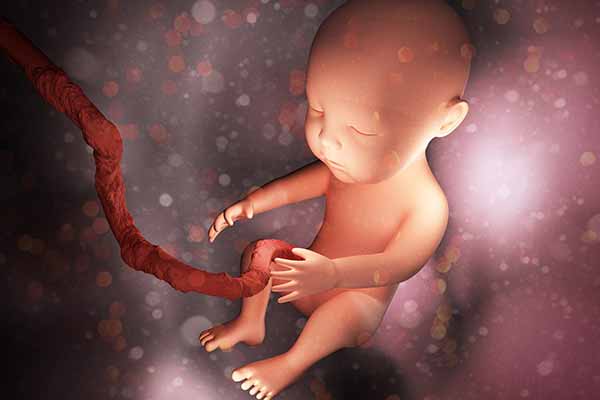Explore the details of amniotic fluid testing with our comprehensive explanation, supervised by experienced doctors at Hiro Clinic. Learn about testing methods, associated costs, and gain expert insights for informed decision-making.
- Introduction
- What is amniotic fluid testing?
- Types of amniotic fluid testing
- What an amniotic fluid test can tell you
- Timing of amniotic fluid testing
- Methods of amniotic fluid testing
- Cost of amniotic fluid testing
- Risks of amniotic fluid testing
- Who is eligible for amniotic fluid testing?
- What is NIPT?
- Summary
Introduction
Amniotic fluid testing is a “test of the chromosomes in the amniotic fluid itself”, which involves directly taking a sample of amniotic fluid and examining it to determine which of the baby’s chromosomes are abnormal.
In the past, it was commonly performed on pregnant women over 35 years of age as one of the prenatal tests to check for chromosomal abnormalities in the baby.
Recently, when NIPT is positive, an amniotic fluid test is used to examine the chromosomes and genes in detail and make a definitive diagnosis. Here, we explain everything pregnant women ‘want to know’ and ‘need to ask’ in an easy-to-understand manner.
What is amniotic fluid testing?
It is one of the prenatal tests that can be performed before the baby is born, and involves inserting a needle directly into the pregnant woman’s abdomen and collecting amniotic fluid for examination.
The test used to be performed using ‘age’ as one of the indicators.
Pregnant women aged 35 years and older were eligible for this test, but recently, amniotic fluid testing is increasingly performed when a positive NIPT result is obtained.
So at what week of pregnancy can an amniotic fluid test be performed?
The appropriate time for an amniotic fluid test is between the 15th and 18th week of pregnancy, when the amniotic fluid is increasing.
The test involves a needle ‘puncture’ into the abdomen, and some people may be concerned that it may fail or affect the baby. The test itself is commonly performed and the method and safety of the test are well established worldwide. Obstetricians are also trained and carefully collect amniotic fluid while applying ultrasound.
In fact, there are many cells floating in the amniotic fluid. These cells are called epithelial cells, which are derived from the baby’s skin and digestive tract. Each of these cells contains information about the baby’s chromosomes. Therefore, by taking a sample of the amniotic fluid, the baby’s chromosomes can be examined in detail. It takes about three weeks for the results to be available. The test results will vary depending on the type of test and how it is viewed. Furthermore, even if there are no abnormalities in the test results, there is no guarantee that the baby is 100% free from abnormalities, as there may be other conditions other than chromosomal abnormalities.

Types of amniotic fluid testing
It is performed as a definitive diagnosis of chromosomal abnormalities in babies. Depending on the testing method, normal mutations and mosaicism can also be investigated.
There are four types of testing methods.
- Chromosome staining method (G-band staining method)
- qf-PCR method (Quantitative Fluorescence PCR method)
- Microarray examination
- FISH method (fluorescence in situ hybridization method)
The following section describes the characteristics of these four inspection methods.
Chromosome staining method (G-band staining method)
The G-band staining method (G-banding) is widely used for babies, as it is a method of testing chromosomes with clearly visible stripes, known as ‘bands’.
Various staining methods using fluorescent dyes have been developed to accurately classify all 46 human chromosomes. It can now identify abnormalities in the number of chromosomes, as well as structural abnormalities (inversions, translocations, large deletions and duplications). However, this method does not have a high detection sensitivity and cannot reveal chromosomal abnormalities so fine that they cannot be seen under a microscope.
qf-PCR method (Quantitative Fluorescence PCR method)
The qf-PCR method uses PCR to increase the number of genes in a specific chromosome segment and quantitatively measure their number.
Test kits are available for Down syndrome (21 trisomy), Edwards syndrome (18 trisomy), Patou syndrome (13 trisomy), Turner syndrome (monosomy X), Triple-X syndrome (trisomy X), Kleinfelter syndrome, and are widely performed when these chromosomal abnormalities are suspected.
Microarray examination
‘Micro’ means ‘small’ and ‘array’ means ‘array’.
The baby’s chromosomes are broken up into small pieces and fluorescent substances are attached to them. There is an array of many tiny dots, divided into many small areas. This test can examine the chromosomes 100 times more precisely than G-banding.
FISH method (fluorescence in situ hybridization method)
The FISH method uses fluorescent staining to illuminate only specific areas of the chromosome. FISH can only be used to diagnose large chromosomal deletions and duplications. It is not suitable for chromosomal aberrations or for examining small details where the mutation is at the genetic level.
What an amniotic fluid test can tell you
Amniotic fluid testing involves taking a sample of amniotic fluid and examining the foetal cells contained in it, so that a definitive diagnosis can be made as to whether chromosomal abnormalities are present.
In addition to chromosomal abnormalities, genetic mutations and enzyme changes can also be examined to determine the presence or absence of certain inherited diseases.
The sex of the baby can be determined by performing an amniotic fluid test, but the sex of the baby is generally not announced.
Timing of amniotic fluid testing
When can I have an amniotic fluid test?
Amniotic fluid testing is available between 15 and 18 weeks’ gestation, when the miscarriage rate is lower and, depending on the test results, the next procedure is possible.
Generally, an amniotic fluid test is performed for a detailed examination of the baby’s chromosomes if the NIPT is positive.
NIPT is performed between 10 and 13 weeks’ gestation, and it takes about a week to receive the results; some women who have a positive NIPT result wish to have a definitive diagnosis earlier, around 12 weeks’ gestation, but usually after 15 weeks’ gestation.
Amniotic fluid is present from early pregnancy, but in very small amounts. As the pregnancy progresses beyond 15 weeks, the amount of amniotic fluid gradually increases, making it safer for both the baby and the mother to collect amniotic fluid. It is therefore common to perform an amniotic fluid test after the 15th week of pregnancy.
The time available for testing is not long enough, so if you are considering having a test, consult your healthcare provider in advance.
If an amniotic fluid test shows abnormalities
Amniotic fluid tests can reveal the risk of chromosomal abnormalities and foetal disorders such as Down syndrome (21 trisomy). There is a 99% chance that Down syndrome (21 trisomy) will be diagnosed, but not being found to have an abnormality does not guarantee that the baby will be 100% normal.
If you are found to have an abnormality, you may be referred to a specialist for genetic counselling, transferred to a specialist hospital where you can be treated, or, depending on the type of abnormality and the severity of the disorder, abortion may be an option.
The Maternity Protection Act defines abortion as being performed before 22 weeks’ gestation (up to 21 weeks and 6 days), after which it is not permitted due to the burden on the mother and ethical issues.
Abortion cannot be performed on the grounds of chromosomal abnormalities, but can be performed if the chromosomal abnormality leads to mental or physical distress for the mother.
Whatever decision you make after hearing the test results is not a mistake.
In order to give you time to think about it if it happens, the test should be carried out at the appropriate time, between 15 and 18 weeks’ gestation.

Methods of amniotic fluid testing
Amniotic fluid testing process
- First, the baby’s position is confirmed by echocardiography.
- The baby’s movements, heart rate and amniotic fluid levels are checked to determine whether the examination can be performed safely. It is important that both the pregnant woman and the baby have no abnormalities and that there is enough amniotic fluid for a safe examination.
- A needle is inserted into the pregnant woman’s tummy to collect amniotic fluid, paying attention to the baby’s condition and the position of the placenta and the pregnant woman’s internal organs.
Is there pain during amniocentesis?
Amniocentesis involves inserting a thin needle from the surface of the abdomen into the uterus, which can be painful. However, it is usually done under local anaesthetic, so do not worry too much.
Amount of amniotic fluid to be collected for amniotic fluid testing
About 10-20 ml of amniotic fluid is needed for the test.
What to do with the amniotic fluid collected?
There is only a small amount of chromosomes in the cells contained in the amniotic fluid and furthermore in the amniotic fluid. As the amount of chromosomes in the amniotic fluid is too small to perform an accurate test, the first step is to increase the number of cells (culture) until the amount of cells is sufficient to perform the test. As the number of cells increases, the number of chromosomes contained in the cells also increases, making the test easier.
However, it takes time for the cells to grow, so it takes two to three weeks for the test results to be available.
Time taken for amniotic fluid testing
If you only need to take amniotic fluid, the examination only takes a few minutes.
However, it may take longer to collect the amniotic fluid, as it is safe for both the baby and the pregnant woman, and is performed using an echo to look for any changes or abnormalities in the baby’s condition. After the examination, the patient needs to rest for 30-40 minutes, so the whole process takes about one hour.
Cost of amniotic fluid testing
The tests are not covered by insurance and are fully self-paid. The approximate cost is between JPY 100,000 and JPY 200,000. It is advisable to check the costs with the medical institution in advance.
Risks of amniotic fluid testing
The risks of the test are non-zero. As the needle is inserted into the abdomen, there is a risk of damaging the mother’s blood vessels or intestines or causing her to bleed. There is also a risk of a hole in the omentum, which surrounds the foetus and amniotic fluid, from which the amniotic fluid can leak out, leading to water breakage or infection in the womb.
The biggest risk of all is the possibility of miscarriage, but the miscarriage rate of the test is quite low at 0.3%.
It is important to have a proper understanding of the risks associated with the test before undergoing it.
Who is eligible for amniotic fluid testing?
Eligible cases include
- If one of the couple is a chromosomal abnormality carrier
- Previous experience of giving birth to a child with a chromosomal abnormality (e.g. 21 trisomy: Down’s syndrome)
- If the mother is elderly
- If NIPT is positive
What is NIPT?
Amniotic fluid testing is a definitive test and can accurately diagnose chromosomal abnormalities, but it carries a risk of miscarriage.
NIPT is a test to consider if such risks are a concern.
NIPT is risk-free because it only requires a blood sample from the mother. Although it is a nonconclusive test, it is highly accurate, with a sensitivity and specificity of 99.9% for Down’s syndrome.
Generally, NIPT can be performed at 10 weeks and 0 day, so if you want to avoid risks, you can have NIPT first and then have an additional amniotic fluid test if there are problems with the results.
Hiro Clinic offers early NIPT to pregnant women whose fetal heartbeat has been confirmed by ultrasound, as we believe that earlier testing provides peace of mind. (However, to ensure the accuracy of the test, testing after 10 weeks is strongly recommended. A second test after 10 weeks’ gestation is offered at no extra charge). With amniotic fluid testing support, the cost of an amniotic fluid test is subsidised up to JPY 200 000 in the event of a positive NIPT test, which is also cost-effective.
The price of an amniotic fluid test is often around JPY 100,000-200,000, so there is little need to worry about the cost if you use this system.
Summary
Amniotic fluid testing can provide a definitive diagnosis of chromosomal disorders, but carries risks, including miscarriage. When considering taking the test, the risks should be taken into account.
You may also want to consider NIPT if you are concerned about risks such as miscarriage.
NIPT can be taken at 10 weeks 0 days of pregnancy and amniocentesis at 15-18 weeks of pregnancy. Once you know you are pregnant, you should consider prenatal diagnosis as soon as possible.
【References】
- Guidelines for obstetrics and gynaecology 2020CQ106-1 – Obstetrics and gynaecology What if a woman is concerned about a foetal abnormality in the first or second trimester of pregnancy and she asks for advice?
Explore the details of amniotic fluid testing with our comprehensive explanation, supervised by experienced doctors at Hiro Clinic. Learn about testing methods, associated costs, and gain expert insights for informed decision-making.
Article Editorial Supervisor

Dr Hiroshi Oka
NIPT specialist clinic, MD
Graduated from Keio University, School of Medicine
 中文
中文























